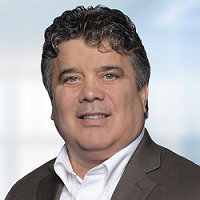 By Tom Foley, Chief Growth Officer, GenieMD
By Tom Foley, Chief Growth Officer, GenieMD
Twitter: @GenieMD
Twitter: @FoleyTom
Host of The Virtual Shift
It’s often said, nothing happens in healthcare unless there is a billing code. To that end, CMS has been progressively enhancing the delivery of care model. Remote Patient Monitoring, coupled with Chronic Care Management, covering Telehealth at parity with an actual office visit. Collectively, each of these services creates a few shifts in the market: 1) from pure telehealth to virtual care, and 2) these collective virtual care services allow the health systems to enhance their delivery of care model by extending services into the homes of their patients – pivoting to a continuous care model. Such a model encourages Providers to partner with clinical services organizations to perform the logistics, initial monitoring, and key clinical program implementations – most importantly adoption of this new models enhances overall revenue potential coupled with patients achieving a better state of wellness.
The pandemic, from the beginning, has forced the entire system to reimagine the delivery of care. Overnight telehealth, video, and audio modalities, went from a nice to have to must have element of the overall delivery of care model.
McKinsey & Company, in a report, states that $250 billion of US healthcare spend could potentially be shifted to virtual or virtually enabled care.
To engage the patient in the home requires two key attributes: frictionless and simplicity. One of the complexities is related to use and integration of the medical device with a computing platform, often an Android and IOS device. These complexities are Bluetooth sync-ing, USB wire-based connections coupled proper use of the medical device. Centers for Disease Control and Prevention (CDC) indicates 85% of adults 65 and older have at least one chronic condition and 56% struggle with two or more – in the latter situation, it often requires more than one medical device to monitor the patient in a RPM/CCM program.
John Hopkins Medicine, in a web post, Vital Signs, states, “The four main vital signs routinely monitored by medical professionals and health care providers include the following:
- Body temperature
- Pulse rate
- Respiration rate (rate of breathing)
- Blood pressure (Blood pressure is not considered a vital sign but is often measured along with the vital signs.)”
Let’s take this same model to evaluate as to how it can help consumer/employees/patients regarding COVID. The CDC guidance states, “As a healthcare provider, you know that people with COVID-19 can have a wide range of symptoms – from no symptoms to mild symptoms to severe illness. Many people with COVID-19 have low oxygen levels, a life-threatening condition. However, not everyone with a low oxygen level will have difficulty breathing, so you must regularly monitor the oxygen levels of your COVID-19 patients… An oxygen saturation of 95 to 100 percent is normal for healthy children and adults. Warning signs of a low oxygen level include trouble breathing, confusion, difficulty waking up, and bluish lips or face. Adults may have chest pain that doesn’t go away.”
For clarity, blood oxygen saturation is only one measure that could guide a person to act. With respect to CIVID the ability to self-monitor one’s vitals to maximize efforts to advance wellness as well as permit the person to be pre-emptive if their vitals, in the case of COVID, their blood oxygen saturation, goes below 95. In the end, yet another tool to use in our efforts to mitigate COVID development, other tools: vaccines, social distancing, masks, cleansing and new therapy from Merck and Pfizer if positive with COVID.
Overall, there are simple and frictionless approaches coupled with many benefits when leveraging a virtual care platform to self-monitor, and engage in a RPM/CCM monitoring program. Never has the promise of innovation in Healthcare IT provided the optimism to embrace a platform that transforms the delivery of care model with a frictionless and simple solution.
Let’s ring in the new year – let’s continue to reimagine the delivery of care model.
This article was originally published on the GenieMD blog and is republished here with permission.
Check out this episode of The Virtual Shift
The Virtual Shift host Tom Foley invites Bodi-Metrics’ founder and COO, Neil Friedman. Bodi-Metrics produces a smart ring, that captures several vitals: HR, HRV, SpO2, BP, temp and EKG which you can integrate into a self-monitoring or RPM program. This offers patients a frictionless and simple approach to capturing clinical information while creating continuous and preemptive engagement that can alert you if data needs attention.
